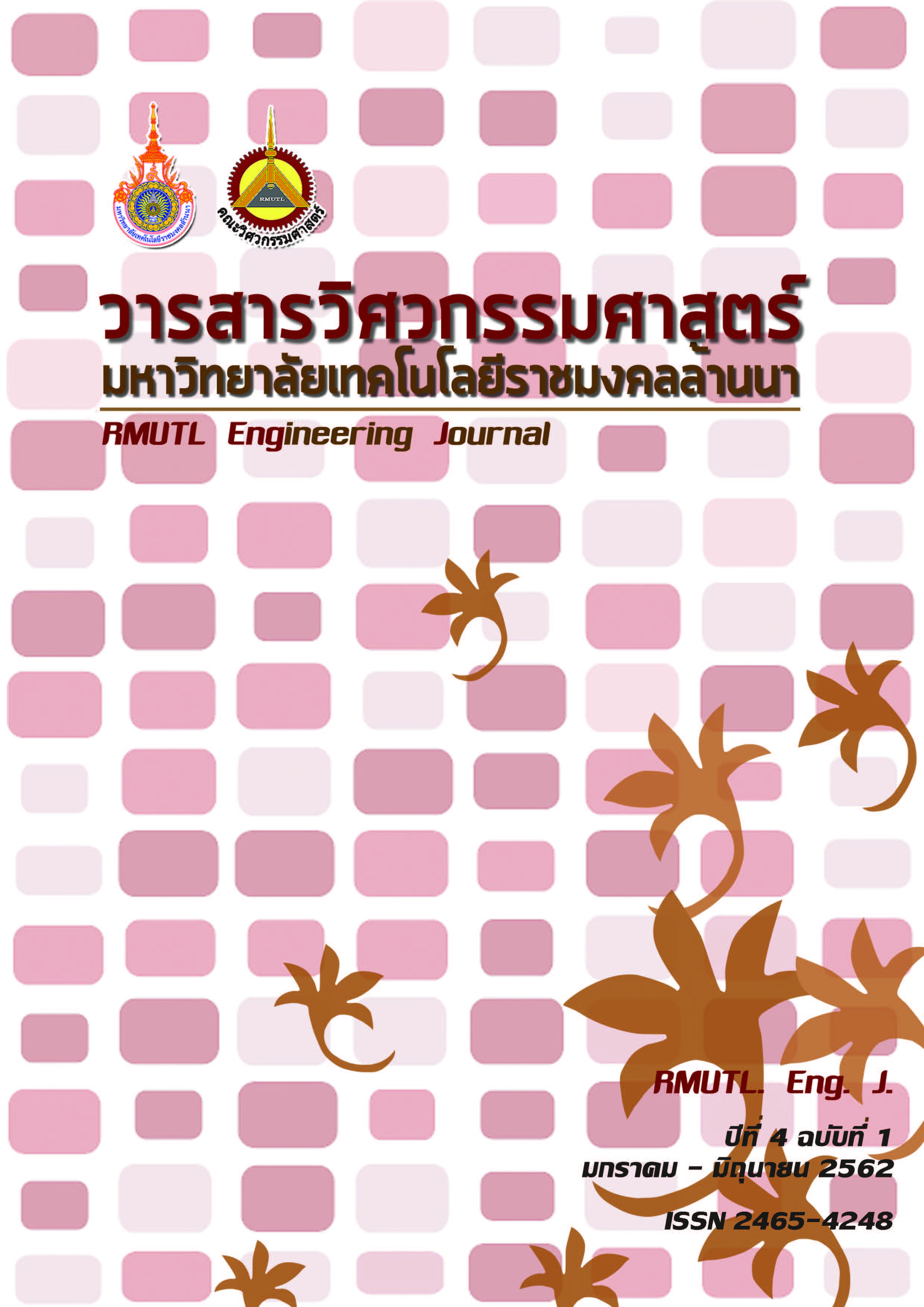Briquette Ratio Investigation of Charcoal Briquette Produced from Brick-Burning-Process Residual Charcoal
Keywords:
charcoal briquette, unburned charcoal, brick burningAbstract
According to the survey of a SME brick factory, it was found that the brick burning process produces a large amount of charcoal residue. It seems that this kind of waste has high potential as the raw material for charcoal briquetting. In this study, the charcoal was mixed with water and starch. The compressed pressure was set to 5 MPa by using a universal testing machine. The percentage of charcoal : water : starch was varied between 42-51%, 41-51% and 2-14% respectively. The briquette burning test showed that 49:49:2% briquette has the shortest ignition and water boiling durations. In addition, the heating values of the briquettes were between 6726 cal/g.
References
[2] รุ่งโรจน์ พุทธีสกุล, อุปวิทย์ สุวคันธกุล, อัมพร กุญชรรัตน์. การผลิตถ่านอัดแท่งจากถ่านกะลามะพร้าวและถ่านเหง้ามันสำปะหลัง. วารสารวิชาการอุตสาหกรรม ศึกษา. 2553;4(2):18-28.
[3] ปราณี วุ่นศรี, วราวุฒิ ดวงศิริ, นุชลี ทิพย์มณฑา. การศึกษาวิธีการผลิตเชื้อเพลิงอัดแท่งจากขี้เลื่อยไม้ยางพารากับมูลสัตว์. วารสารวิจัย มทร.กรุงเทพ. 2018;12(2):17-25.
[4] Antwi-Boasiako C, Acheampong BB. Strength properties and calorific values of sawdust-briquettes as wood-residue energy generation source from tropical hardwoods of different densities. Biomass and Bioenergy. 2016;85:144-152.
[5] Tantisattayakul T, Phongsasem S, Phooyar P. Taibangury P. Community-based renewable energy from biomass briquettes fuel from coconut leaf. Thai Journal of Science and Technology. 2558;3:418-31.Thai
[6] Sasujit K, Sanpinit W, Wongrin N, Dussadee N. Study of process densification of corn cob and corn husk briquettes by cold extrusion technique using starch with lime mixed as binder. Thaksin University Journal. 2558;18:5-12. Thai
[7] Teixeira SR, Pena AFV, Miguel AG. Briquetting of charcoal from sugar-cane bagasse fly ash (scbfa) as an alternative fuel. Waste Management 2010;30(5):804-7.
[8] Massaro MM, Son SF, Groven LJ. Mechanical, pyrolysis, and combustion characterization of briquetted coal fines with municipal solid waste plastic (MSW) binders. Fuel 2014;115:62-69.
[9] Ndindeng SA, Mbassi JEG, Mbacham WF, Manful J, Acquaah SG, Moreira J, Dossou J, Futakuchi K. Quality optimization in briquettes made from rice milling by-products. Energy for Sustainable Development 2015;29:24-31.
[10] Jittabut P. Physical and Thermal Properties of Briquette Fuels from Rice Straw and Sugarcane Leaves by Mixing Molasses. Energy Procedia 2015;79:2-9.
[11] Yank A, Ngadi M, Kok R. Physical properties of rice husk and bran briquette under low pressure densification for rural applicaton. Biomass and Bioenergy. 2016;84:22-30.










